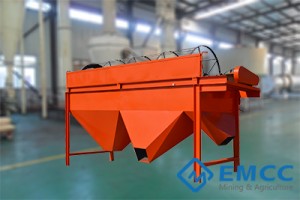
Rotary Drum Screen is a commonly used organic fertilizer material screening equipment. When we use Rotary Drum Screen, the selection of the screen is very important. Then, how to choose the right screen?
The screen is an important part of the screening machine, which is made of mulberry silk, metal wire or synthetic fiber. The screen has the advantages of precise weaving, zero defects, regular mesh, reliable filtration accuracy, high compressive strength, high temperature resistance, chemical corrosion resistance, and good wear resistance.
The screen is a non-standard product, and the size of the vibrating screen, the number of layers of the screen, and the mesh number of the screen can be customized according to customer requirements. For customers who have not used screening equipment before, choosing the mesh size is a difficult problem. When we use the screening machine, the selection of the screen is very important. First of all, we must clarify what material we are screening, and then choose the screen that can meet our needs according to the production requirements.
The technical parameters describing the screen mesh include mesh number, wire diameter, aperture, diameter, material, effective screen surface, etc., and the standard length unit is millimeter (mm). What we usually call the mesh number of the screen is not the number of all the sieve holes on the entire screen. The so-called mesh number refers to the particle size of the material. The general definition refers to the number of meshes in an area of 1 square inch.
The number of meshes that the material can pass through in a certain area is defined as the number of meshes.For example, 200 mesh, that is, the material can pass through a screen with 200 pore on 1 square inch. For example, 100 mesh means that the material can pass through a screen with 100 pore on 1 square inch. For example, 50 mesh, that is, the material can pass through a screen with 50 pore on 1 square inch. By analogy, it can be known that the mesh number of the screen is inversely proportional to the pore size and particle size, and proportional to the number of holes. That is: the larger the mesh number, the more the number of holes, and the smaller the aperture, indicating that the particle size of the material is finer; the smaller the mesh number, the fewer the number of holes, and the larger the aperture, indicating the larger the particle size of the material.
Therefore, we must choose the screen according to the size required for production to meet our work needs.
Post time: Dec-28-2021